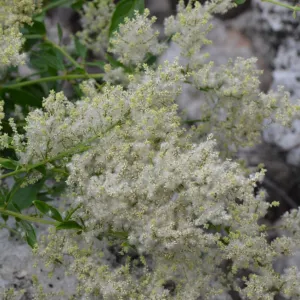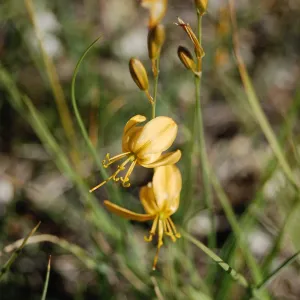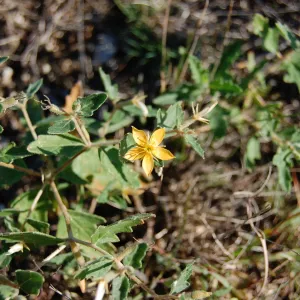By Delmar Cain, Boerne Chapter – Native Plant Society of Texas
Published in the Boerne Star on February 14, 2014.
Someone relayed a nasty rumor to me the other day that there were some folks who read this column regularly, but who didn’t always take my advice. “I am shocked, shocked I tell you” that such could happen. But while perusing old books the other day I came upon a 1950 gardening book for the San Antonio area. The authors discussed the benefits of composting, good seeds and strong healthy oleander and pyracantha shrubs. They topped off the area of pesticides by suggesting a 5% solution of DDT.
It is too bad that we can’t see into the future and take only the good advice, if any. But that is probably not realistic either. In Greek mythology, Cassandra could actually foretell the future. Unfortunately her destiny was that no one would believe her.
Here is one of my predictions. Someone is going to earn good money when he/she writes a book on the origin of the common name of some of our native plants. In the last Native Grown article I mentioned that one of the common names for Galium aparine was Stickywilly. That jogged my memory about a memorable trip and another plant with a strange common name, Chickenthief.
As I have mentioned before Bill Ward was always ready to see something that he hadn’t seen before. In October of 2010, I got a call from him asking me if I would like to go to Kerrville to see an interesting plant that Marvin Hatter had found growing in the right of way of I-10. He said that if we found enough of the plants we might collect one or two for the Botanical Research Institute of Texas herbarium. Bill was always trying to find something that would be as interesting as his quest for the Big Red Sage.

Bill and I had collected another interesting plant on my lot in 2009. I had been walking along the top of a ledge and saw a strange looking plant and sent Bill a picture to see if he could identify it. He sent it to Jason Singhurst, a botanist, with the Wildlife Division of the Texas Parks and Wildlife Department. The plant turned out to be Juda’s Bush (Iresine rhizomatosa). The plant, also known as bloodleaf, is generally found in wetlands north and east of Central Texas and is rare or endangered in three states. Kendall County is the farthest west that the plant has been found.
I could generally be persuaded to go with Bill, the only requirement being that he asked. We drove to Kerrville in my truck. When we got to the area where we thought the plant was, the median of I-10 seemed about 300 yards wide. Bill said that Marvin had told him that he just pulled his vehicle into the median and looked at the plants. Bill told me to just pull off into the median, which was flat, and that no one would care.

We got out of the truck and I grabbed my camera. Bill got his digging tools and other plant collecting implements. The first law enforcement officer from the Kerr County Sheriff’s office arrived shortly thereafter. He got out of his vehicle and inquired about the nature of our business, which we assured him was a very benign examination of plants. He seemed a bit skeptical but I guess we looked harmless enough and were parked far enough away from the lanes and shoulder.
We had just started to examine the plants, Torrey’s Craglily (Echeandia flavescens), when the second officer arrived. This time it was a DPS officer with a good sense of humor. He asked what we were doing. I said that since deer season was coming and Kerr County had plenty of deer, we thought we would set up a deer blind in the I-10 median for the season. He laughed and said that we were not the first to do that in Kerr County. He wished us success in our plant collecting.
Bill collected two specimen plants of Torrey’s Craglily and placed them between sheets of newspaper in his plant press, along with the specimen plants of the Juda’s Bush. Tragically, Bill died two and a half months after the last plants were collected.
On both of these adventures I took pictures of the plants. It took almost four years, but those pictures and Bill’s collected plants are now at the Botanical Research Institute of Texas. Bill’s collected specimens of Torrey’s Craglily, normally found in far West Texas, New Mexico and Arizona, now document the farthest east the Torrey’s Craglily has been found.
The collected plants were reported under my name because we could not find Bill’s notes, other than the GPS locations on the newspaper in the plant press. Those submissions to BRIT can be view at the following:
Delmar Cain #1:
http://atrium.brit.org/collection_display_info.php?id=16262
http://atrium.brit.org/image_info.php?type=specimen&id=16262&scrollTop=0

Delmar Cain #2:
http://atrium.brit.org/collection_display_info.php?id=16263
http://atrium.brit.org/image_info.php?type=specimen&id=16263&scrollTop=0
On my camera I captured an image of another plant in the median on that October day in Kerrville. The plant was Stick-leaf (Mentzelia oligosperma), aka Chickenthief.
